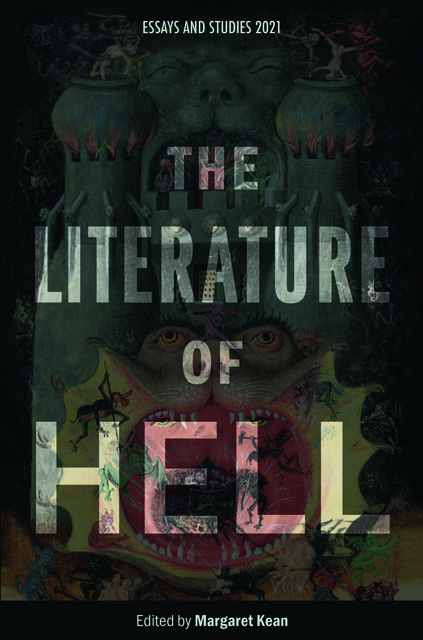Hell’s Kitchen: Underworlds in Leonora Carrington’s Down Below and The Hearing Trumpet
Published online by Cambridge University Press: 14 January 2023
Summary
This chapter escorts the reader to the underworlds fashioned by the surrealist writer and painter, Leonora Carrington (1917–2011). Carrington is known primarily for her career as an English painter, who joined the surrealists in Paris in the late 1930s and later emigrated to Mexico. Here, the focus will be on Carrington’s 1944 memoir Down Below and her comic novel, The Hearing Trumpet, written in 1950 but not published until 1976. Carrington’s protagonists in these literary works serve as archetypal visions of the artist herself, as maiden and crone respectively. These personae seek and gain access to underworld realms through painterly maps, alchemical symbolism, and mysterious towers. Carrington’s imagining of hell as a salvific space of refuge, which is accessed through a mysterious tower, connects these two texts to the theme of underworld journeys in her wider corpus of work. In a 1952 interview, André Breton, surrealism’s most prominent theorist, said: ‘Leonora Carrington, in life as in art, has never tried to see any way but through magic.’ Carrington’s magical hermeneutic is visible in her painterly conjuring of enchanted worlds, and legible in her literary works. She attained an almost mystical status in the eyes of fellow surrealists, who saw her as a visionary who had accessed occult realms of the psyche during her institutionalisation at a hospital for the mentally ill in Santander, Spain, in the early 1940s.
Before her time in the institution, Carrington made her name as a young and rebellious artist who had rejected her family’s ambition that she agree to a socially advantageous marriage. She left her family in England to study art as a young woman, and, in 1937, she met a painter whose work attracted her: Max Ernst. They became lovers and moved into an apartment together in Paris later that year. In 1938 they relocated to a dilapidated farmhouse in St. Martin d’Ardèche. The two transformed the house into a collaborative oasis, filling it with sculptures, painting, and unique architectural features. In the following year the French government declared the German and politically controversial Ernst an enemy alien, and interned him at a camp in Largentière. Carrington was able to provide Ernst with painting supplies, and her lobbying on his behalf with influential Parisian contacts eventually secured his release from Largentière.
- Type
- Chapter
- Information
- The Literature of Hell , pp. 103 - 124Publisher: Boydell & BrewerPrint publication year: 2021



